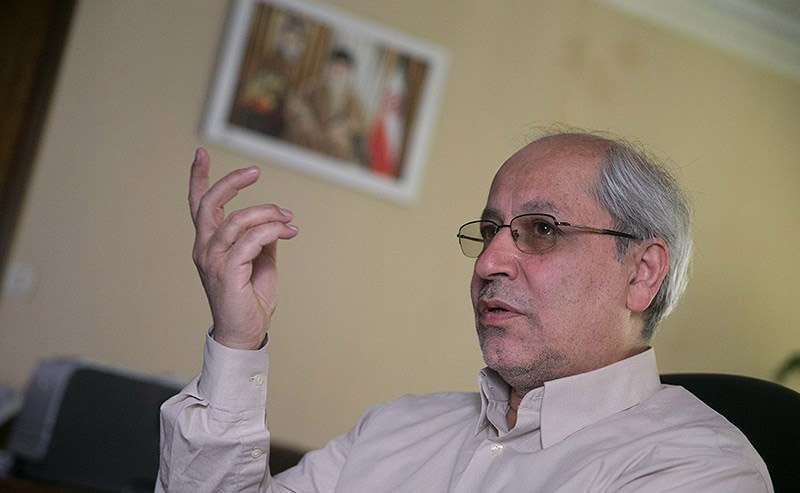Presidential Advisor Outlines 6 Challenges of Iran’s Economy

EghtesadOnline: Water crisis, environmental woes, crumbling pension funds, banking troubles, budget deficit and unemployment are six major challenges of Iran’s economy, the senior economic advisor to President Hassan Rouhani said.
Speaking at a meeting with private sector’s businesspeople on Sunday, Masoud Nili said, “Gross domestic product (excluding oil) has undergone three main changes over the past 40 years in March 1976-77, March 1988-89 and 2009-10. It also suffered from recessions in the years between March 1994-96 and march 2011-13,” the Persian daily Jahan-e Sanat reported.
Non-oil revenues fell by 60% during 1976 to 1988 due to a decrease in GDP and the explosive growth in population. During March 1989-2008, GDP saw an uneven growth except for the years March 2001-2007 when per capita revenues doubled. Since 2007 until now, economic growth has remained almost unchanged.
“Despite the 30% decline in per capita revenues compared to 1976, consumption has grown by 1.5 times. In the meantime, we used up our natural assets such as water, air as well as pension funds and government assets,” Financial Tribune quoted Nili as saying.
“Today we are grappling with water shortage and air pollution, and have inherited banking and budgeting problems from the past decades.”
The advisor noted that following the dramatic decline in oil exports and prices, the country delivered its worst performance in oil exports last Iranian year (March 2015-16) and generated $24 billion in revenues.
Economic Growth Contributing Factors
The economic pundit said efforts to improve macroeconomic stability, utilize the factories’ idle capacity, finalize the Joint Comprehensive Plan of Action (the formal name of the nuclear deal reached with world powers) and global economic developments were at play to bring about the current Iranian year’s exceptional economic growth.
Referring to the 7.2% economic growth and the single-digit inflation rate registered this year, Nili said the main economic indices reflect a positive picture of the economy.
“It has a troubling side, though. There were 60,000 job applicants a year in the past, but since the third quarter of March 2014-15, as many as 1.07 million people joined job applicants every year. Only in the first half of the current year, the number of job-seekers reached 1.2 million. Therefore, despite the fact that 700,000 jobs were added to the economy in the current year, an additional 500,000 individuals joined the unemployed,” he said.
“This year’s economic growth was largely triggered by Iranian diplomacy but there are two uncertainties about next year’s GDP growth, which will not have a positive impact on economic activities: those stemming from the upcoming presidential election in Iran and the unpredictability of future developments on the international stage.”
Nili called on all policymakers, economists and entrepreneurs to hold a national discourse and solve the problems, irrespective of their political inclination.
“Everyone is talking about spending and costs, but no one talks about resources. Iran’s economy cannot afford a political auction and problems should be resolved through negotiations. National discourse is beyond the interaction between the government and the private sector,” he concluded.
SCI Economic Report
In its latest report on Iran’s economic growth, the Statistical Center of Iran put GDP growth for the three quarters of the current Iranian year at 7.2%.
Excluding the growth in oil sector, the rate stood at 5%, SCI said.
Iran’s inflation rate went below 10% for the rolling year ending June 20. This was the first time the country was experiencing single-digit inflation in about a quarter century. The rate kept sinking in the ensuing months, but lately shows an uptrend.
Inflation averaged at 8.58% in the month to January 19, showing a 0.01% increase compared to the preceding month, which had experienced a record low inflation since March 1992, the Central Bank of Iran’s latest report shows.
Data from the Statistical Center of Iran put the unemployment rate in summer at 12.7%.
The figure was higher by 1.8% compared to last summer and up 0.5% compared with the previous quarter (March 20-June 20, 2016).
According to SCI, 3.33 million Iranians were unemployed in Q2, such that 10.4% men and 21.8% women of ages 10 and above did not have work in the period.
The unemployment rate was 14.4% in urban regions and 7.9% in rural areas. Joblessness was higher among women compared to men and among urban dwellers.
Youth unemployment rate, i.e. the proportion of the population between the ages of 15 and 29, stood at 26.7% in summer, registering a 3.3% rise compared with the same period of last year and a 1.8% increase over the last quarter.


